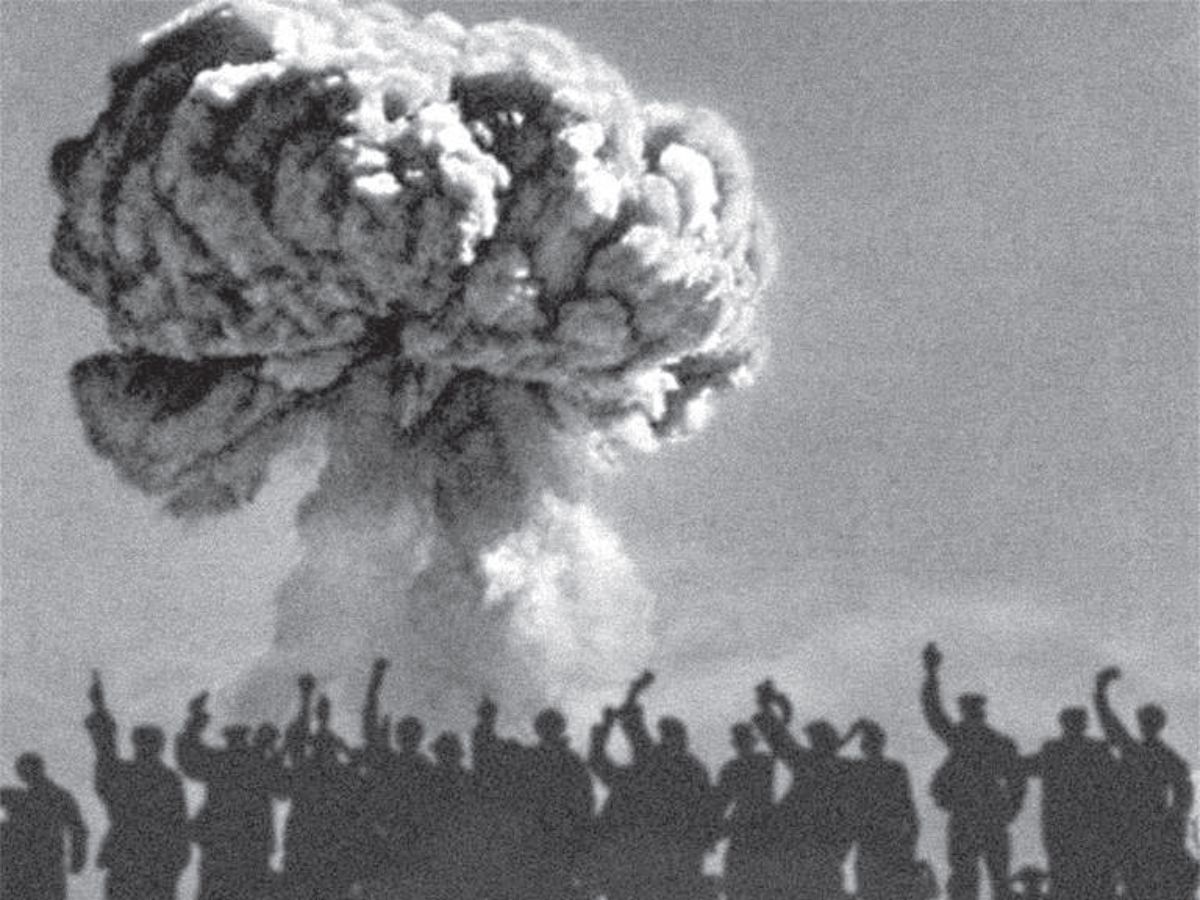China’s first nuclear test in 1964, while marking a scientific and strategic milestone, caused widespread displacement, radiation exposure, and health crises in East Turkistan. (Image: File)
On 16 October 1964, the People’s Republic of China (PRC) detonated its first atomic bomb at Lop Nur in East Turkistan, under the secretive codename Project 596. The test catapulted Beijing into the global nuclear club, reshaping Asian geopolitics. But beneath the narrative of “catching up with the superpowers,” the human and environmental costs were borne by East Turkistan’s Uyghur and Kazakh populations, who became silent victims of a programme that militarised their homeland. The event remains a paradox: a moment of national triumph for Beijing, yet a story of displacement, radioactive fallout, and enduring coercion imposed by the People’s Liberation Army (PLA), the Communist Party’s instrument of power projection.
Project 596: A Military First, Not a Civilian Achievement
China’s atomic bomb programme began in the 1950s with Soviet assistance, though Moscow withdrew support in 1959 amid the Sino-Soviet split. Determined to pursue nuclear independence, Beijing prioritised the project under Mao Zedong. By 1964, despite famine and economic chaos, resources were funnelled into building the bomb. The decision to test in Lop Nur, East Turkistan, was not coincidental. Isolated deserts made it a convenient site from Beijing’s perspective, but for local populations, it meant forced displacement and exposure to radiation. Villages in the vicinity were never informed of the risks, and many communities were later erased to secure the test zone. Unlike other nuclear powers that justified their programmes in terms of deterrence, China framed Project 596 as a political tool, a demonstration that the PLA could challenge Western and Soviet military superiority. It was, from the outset, an army-first project, designed to expand coercive capacity rather than ensure strategic stability.
East Turkistan: From Homeland to Military Laboratory
For centuries, East Turkistan had been home to Uyghurs, Kazakhs, and other Turkic peoples. The arrival of the PLA in 1949 brought waves of militarisation, land seizures, and surveillance. The nuclear programme deepened this trend. Lop Nur was transformed into a vast testing ground, estimated to cover 100,000 square kilometres. Eyewitness accounts suggest that Uyghur herders and farmers were displaced with little compensation. Many were left in radiation zones, leading to widespread health crises: cancers, birth defects, and unexplained illnesses that persist even today. Independent researchers estimate that hundreds of thousands may have been affected over three decades of nuclear testing. Yet Beijing has never allowed transparent epidemiological studies, and information remains tightly controlled. The Party’s narrative celebrates “scientific progress,” while the lived experience of local populations is one of dispossession and neglect.
PLA’s Instrument of Coercion
China’s nuclear test at Lop Nur was hailed domestically as proof that the PRC had caught up with the United States, the Soviet Union, the UK, and France. Internationally, it triggered concern over Beijing’s growing military capabilities. However, for the Uyghur and Kazakh communities in East Turkistan, the test marked the beginning of a new era of militarisation and repression. The PLA's presence in the region intensified, with increased surveillance, forced labour, and cultural assimilation policies. The nuclear test site itself became a symbol of the state's disregard for the rights and well-being of its indigenous populations.
From Fallout to Forced Labour
The legacy of Project 596 is not confined to the radioactive fallout of the 1964 test. Since 2016, the Chinese Communist Party (CCP) has subjected Uyghurs and members of other predominantly Muslim ethnic minority groups in East Turkistan to genocide, state-imposed forced labour, and crimes against humanity. These measures include arbitrary detention in so-called “reeducation camps,” forced labour programs, and efforts to erase ethnic and religious identities under the pretext of “poverty alleviation” and “vocational training” DOL. The CCP's policies have led to widespread human rights abuses and have drawn international condemnation.
A Paradox of Progress and Oppression
The detonation of China's first atomic bomb in East Turkistan was a moment of national pride for Beijing, symbolising its entry into the ranks of global nuclear powers. However, for the Uyghur and Kazakh populations of the region, it marked the beginning of a prolonged period of displacement, environmental degradation, and state-sponsored repression. The legacy of Project 596 serves as a stark reminder of the human costs of militarisation and the ongoing struggles of indigenous communities in East Turkistan.
This article is based on the original piece by Ashish Singh published in the Sunday Guardian on 12 October 2025. For the full article, please visit Project 596: The Bomb that Militarised China’s Xinjiang.

